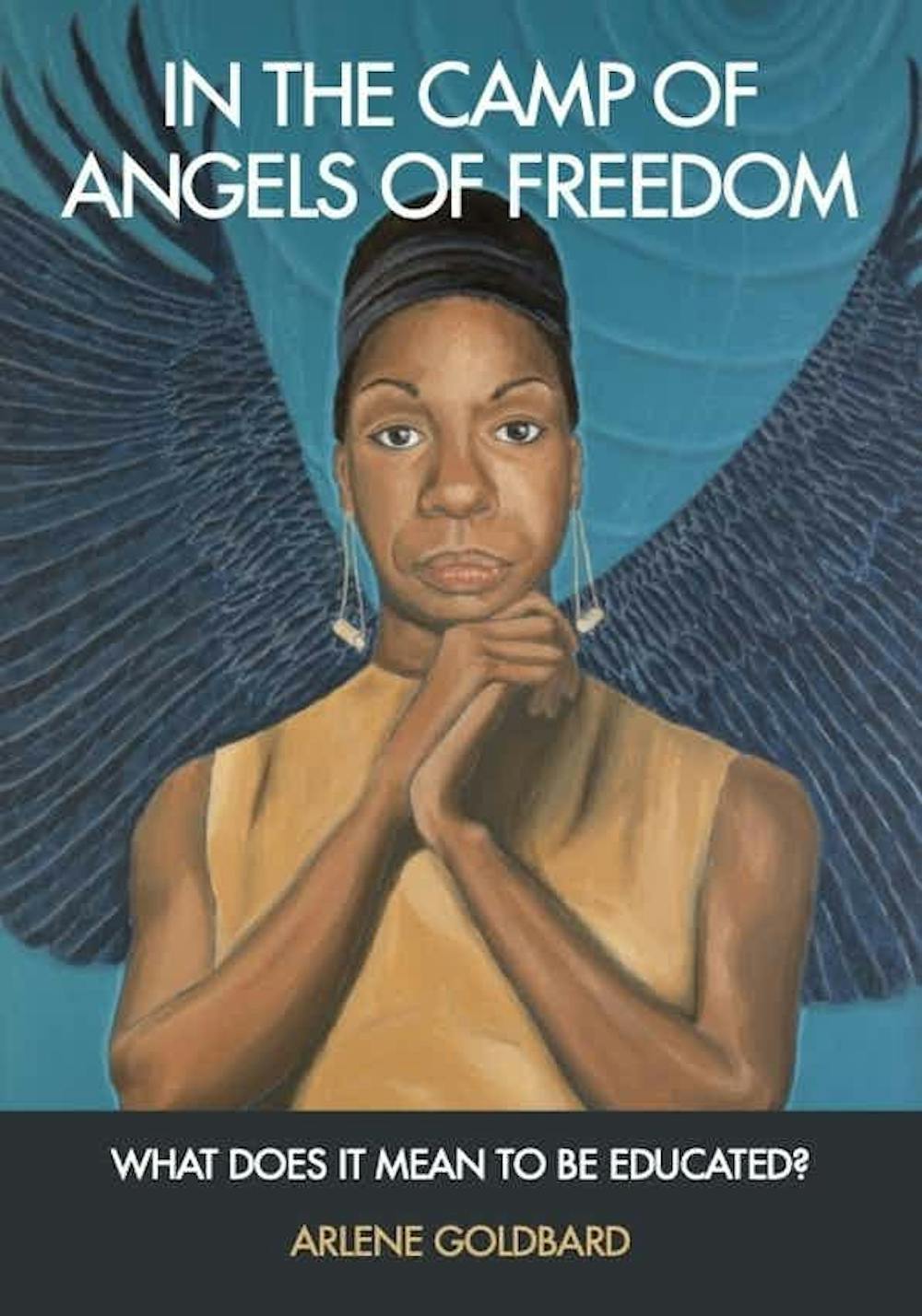In Arlene Goldbard’s book, “In the Camp of Angels of Freedom,” published on Jan. 24, Goldbard asks her readers: what does it mean to be educated? In her book, she mixes personal narrative, political observation and portrait paintings; the combination of these highlights how her ideas of education have shifted and formed through personal experience; however, the final product is murky.
The book has 11 essays, each focusing on one of her angels. Goldbard explains that her concept of angels comes from the Hebrew word “malakhim,” which, in Jewish mysticism are "messengers between worlds, translating spiritual energy from the highest realms to the earth bound,” according to the book. Goldbard organizes her angels in a camp, in which the angels communicate a singular message that embodies a specific aspect of her personal ideology.
The angels are philosophers, artists and writers, including James Baldwin, Paul Goodman and Nina Simone. The depictions of her angels often remain singular and focus heavily on limited arguments throughout their work, creating a cast of characters that convey something about Goldbard rather than the complexities of each person. Goldbard’s writing and paintings of these angels question what it means to respectfully depict people within art and might challenge the idea that there is a “right” way, while at the same time leaving the reader wanting more information.
There are good ideas presented in the book, but most of it seems to be about Goldbard’s achievements as an activist. This would have been more interesting if she wrote more about her experience, but instead it felt like she added in random famous writers and artists to either create caricatures of them or use them to legitimize her argument.
Goldbard does this by weaving personal accounts into the ideas and essays created by each angel in her camp. These chapters follow eras of Goldbard’s life: her first marriage, her changing political views, her life as an activist and her relationship to painting and art.
The most compelling parts of these essays are small confessional and personal stories of her early life; they are immediately answered by the insertion of one of her angel's philosophies. The philosphies are intended to connect to her life in specific and impactful ways, but some of her angels are not brought up until the last few paragraphs of the chapter, which creates confusion throughout the first half of the book.
The second half of Goldbard’s book consists of essays on her educational experience, both institutional and life. She offers ideas to improve the current education system that Goldbard argues values credentialism too highly. Her philosophy rejects critique and focuses on possibility, which challenges higher education’s instinct to evaluate, judge and criticize when assessing academic achievement.
To connect the two parts, Goldbard includes a chapter after she paints each portrait. She lined them all up in the room and encouraged them to converse. Although entertaining to engage the idea of what would happen if all these writers talked, it is written in a confusing fashion. With 11 people talking at once, it's hard to decipher what they are talking about and who is talking — the argument itself seemed unclear until much later.
Goldbard’s most powerful arguements challenge “conventional” ways of thinking. She condems critical analyses that encourage art and education to achieve “perfection” and “originality,” as these limit the possibility of the work and each student’s learning experience — to Goldbard, the college student’s tendency to critique is problematic.
Goldbard argues that the academic tools we use to criticize, analyze and review may be doing more harm than good, which thus enforces an education system rooted in elitism in which success is granted through specific certifications and degrees. These arguments deserve our attention as they don’t only question the access and privilege that is needed to participate in higher education, but they break down the academic practices required of students to achieve “success.”
While some sentences in her argument make sense, there is not a lot of evidence throughout — the arguments are not written in a traditional fashion conducive to convincing anyone who doesn’t already agree with her. However, in the book she also argues against traditional form, so it seems like saying this would be proving her point. The construction of the argument feels messy.
Overall, Goldbard made some important arguments on the over dependence on credentialism, but they relied heavily on ideas constructed by other writers that she combined together. With limited description and representation of her “angels,” it is hard to understand her own argument without reading the essays she uses as her evidence. Though important, there are likely other books (or writing and art from each of her angels) that have argued these points better; the book should be taken for what it is: a deeply personal, passionate and hopeful account of Goldbard’s educational experience.
Get content from The Daily Lobo delivered to your inbox
Addison Key is a freelance reporter at the Daily Lobo. She can be reached at culture@dailylobo.com or on Twitter @addisonkey11
Addison Key is a senior reporter at the Daily Lobo and served as the Summer 2023 culture editor. She can be reached on Twitter @addisonkey11.






